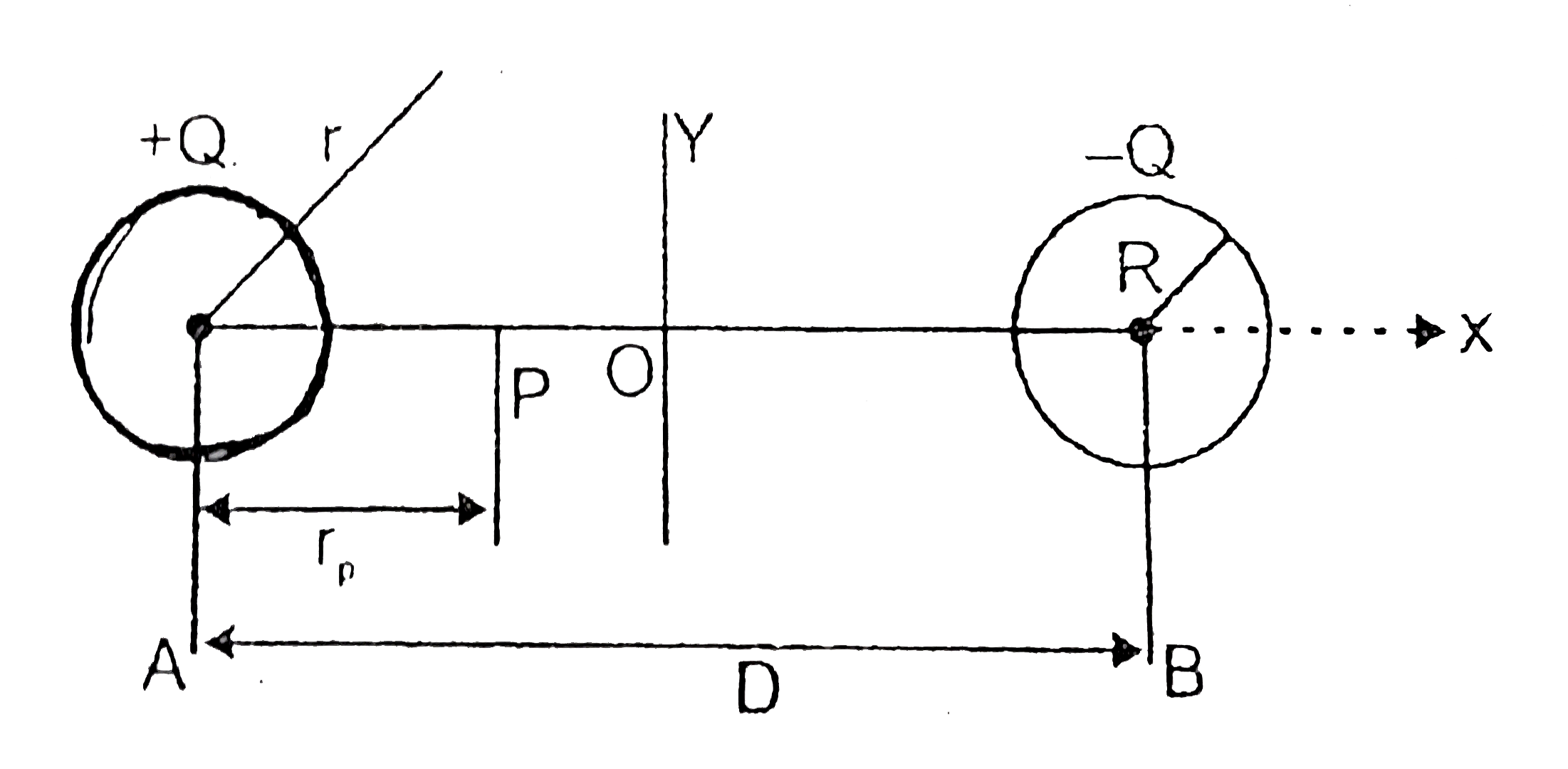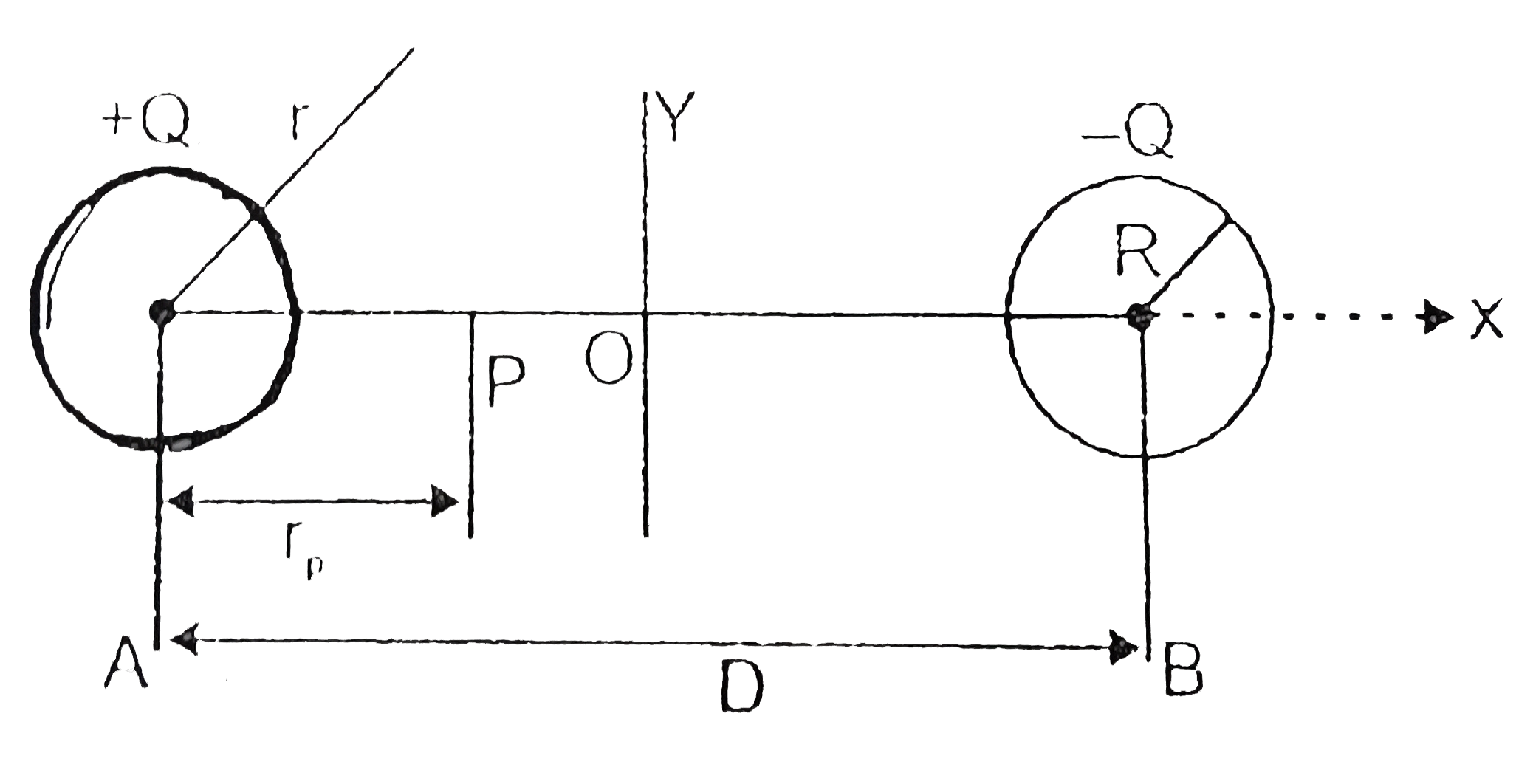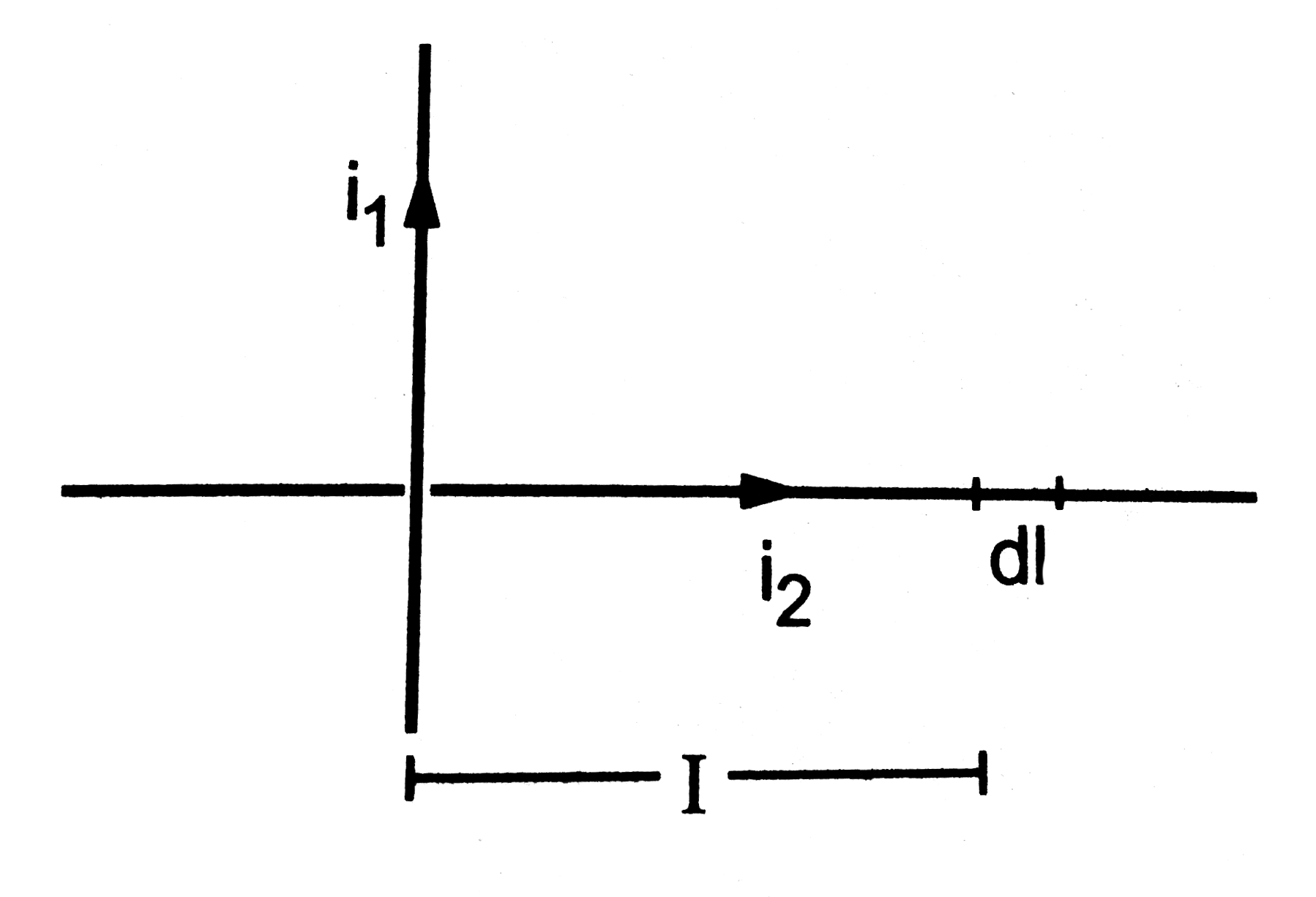
The figure shows two identical long straight metal wires, A and B placed parallel to z-axis the cross sectional radius of each wire is R and the separation of the two wires is . The electric potential at a perpendicular distance from a long straight wire due to that wire is given by where is a positive constant. the wires carry charges and per unit length respectively. Then
Q. Consider a point P on the x-axis. The electric field at P is given by:
The correct Answer is:A
in radial direction
At point p,
by susperposition
Similar Questions

The figure shows two identical long straight metal wires, A and B placed parallel to z-axis the cross sectional radius of each wire is R and the separation of the two wires is D>>R. The electric potential at a perpendicular distance r>R from a long straight wire due to that wire is given by V=−kln(rR) where k is a positive constant. the wires carry charges +Q and −Q per unit length respectively. Then
Q. As D>>R, the electric field due to a long straight wire has cylindrical symmetry. The charge per unit length of the wire isView SolutionA long straight wire is placed along the axis of a circuit ring of radius R. The mutual inductance of this system is
View Solution
Knowledge Check
- Question 1 - Select One
Two long and parallel straight wires A and B are carrying currents of 4A and 7A in the same directions are separated by a distance of 5cm. The force acting on a 8cm section of wire A is
A3×10−6NB6×10−6NC9×10−6ND12×10−6N
Figure shows, three long straight wires parallel and equally speed with identical currents. Then, the force acting on each wire due to the other is
 View Solution
View SolutionTwo long straight wires are set parallel to each other Each carries a current i in the same direction and the separation between them is 2r. The intensity of the magnetic field midway between them is
View SolutionA cylindrical long wire of radius R carries a current I uniformly distributed over the cross sectional area of the wire. The magnetic field at a distance x from the surface inside the wire is
View SolutionA long straight wire carries a charge with linear density λ. A particle of mass m and a charge q is released at a distance r from the the wire. The speed of the particle as it crosses a point distance 2r is
View SolutionA long, straight wire of radius R carries a current distributed uniformly over its cross section. The magnitude of the magnetic field is
View SolutionCalculate the force per unit length on a long straight wire carrying current 4A due to parallel wire carrying current 6A current. Distance between the wires =3cm.
View SolutionTwo long wires, carrying currents i1andi2, are placed perpendicular to each other in such a way that they just avoid a contact. Find the magnetic force on a small length dl of the second wire situated at a distance l from the first wire. (figure)
 View Solution
View Solution

